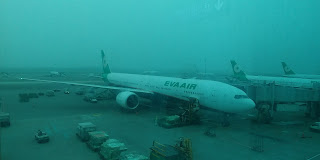Inside the most densely populated slum in the world Dharavi Written by Robin Pascall
Image: Flickr KIM RABORN
One of the most memorable parts of this trip to India will be the visit to Mumbai's Dharavi slum. Here in an area of just slightly over 2.1 square KM some 700,000 people call home. Making it one of the most densely populated areas in the entire world. There are barely any government services available to the people here who are poor beyond most of our comprehensions. This however does not mean that they have nothing. Most of the residents work harder than the average person. Dhavari is said to be a city within a city. "Dharavi has an active informal economy in which numerous household enterprises employs 100% of its residents. whether it be in leather, textiles and pottery products are among the goods made inside Dharavi, there is some kind of job and contribution to the community for everyone The total annual turnover has been estimated at over US$1 billion." - Wikipedia
Our entry to this wild place was made possible by walking tour operator, "Reality Tours", (tour guide Balaji was great) a company organized by a not for profit organization that have set a mandate to return 80% of their proceeds back into the community of Dharavi to make life better for the residents. The non profit organization operates a school in the slum as they acknowledge that education is for many residents the greatest challenge to a better life. The organization has been the winner of International Responsible tourism awards still it does feel a little strange to pay money to observe poor people. Please visit their website to learn more. I have also referenced Wikipedia for some of the statistics listed above. https://en.wikipedia.org/wiki/Dharavi http://realitytoursandtravel.com/about.php
Photography of any kind is not permitted by tour goers in respect of the residents (Any photos used in this blog are borrowed and credited from the net.) The residents however have, for the most part come to recognize that the tour is bringing much needed money into their micro economy, children would wave hi at us constantly and their faces would show delight if we waved back or gave a high five.
I do wish I could have taken photos, because everywhere the eye could look were crazy sights somewhat overwhelming, the mix of industrial and residential so tightly interwoven. Sights one would see no where else. At the heart of the slums micro economy is a recycling operation in which vagrants collect glass, and plastics that are littered regularly by the railroad tracks and through the city and sort and collate in self made random piles atop buildings where others in the slum melt down the plastics and stuff into pellets which they are able to sell in mass to larger facilities. Visually much of this appears to take place in what we might consider back alleys, tiny alleys some not even an arm span wide, packed with foot traffic, machinery, heaps of what to the un-trained eye looks like garbage. Many people in the slum work on leather, apparently they are no longer allowed to tan it, but still process and produce a great deal of leather products. We stopped into a leather store in the middle of the tour, that seemed strangely out of place with its air conditioned comforts and debit machines. Although the slum covers a tiny chunk of land, it is jam crammed and is a complex maze of alleyways which one could lose themselves in.
Photo by: Jonas Bendiksen Flickr
Serious sanitation issues exist in the slum, there is a sewage system but i understand it frequently becomes clogged and stuff. People have to shower in narrow alleyways that are high foot traffic zones, next to electrical services that are just randomly strung around with high voltage and low clearance that people have to duck under, while kids play cricket and bounce balls all in the same zero space zone.
Photo by: Rebecca Desmots Flickr
The adventure continues... Subscribe to the blog for more updates on my adventure!
by Robin Pascall






Very interesting!
ReplyDelete